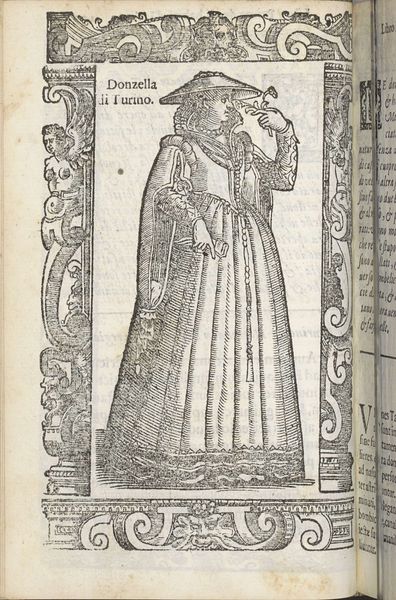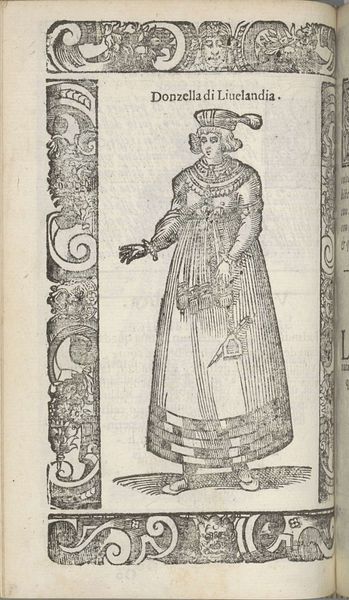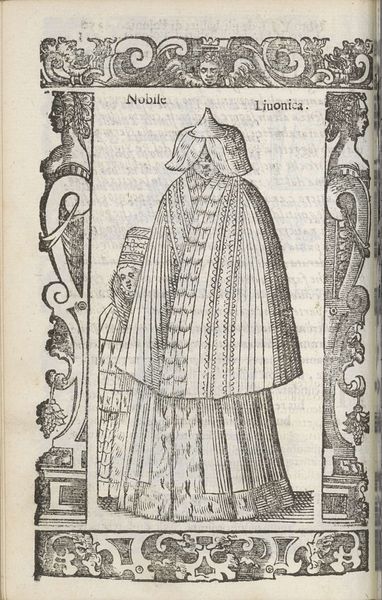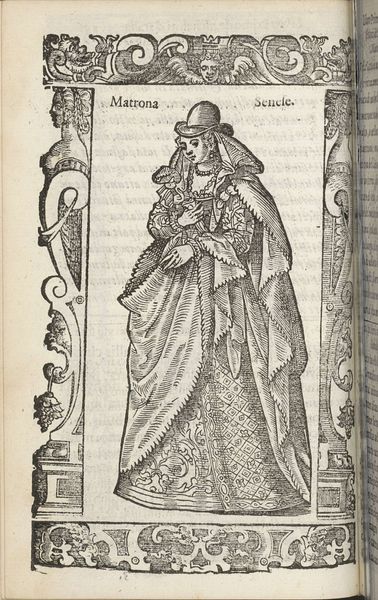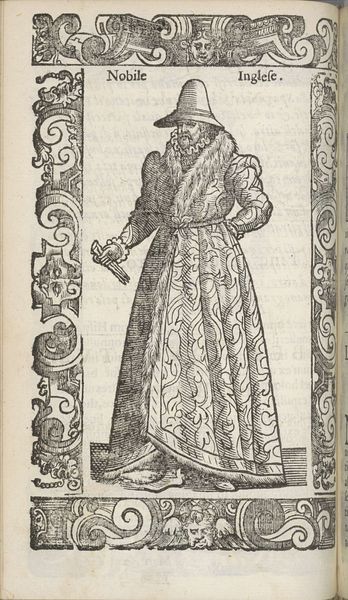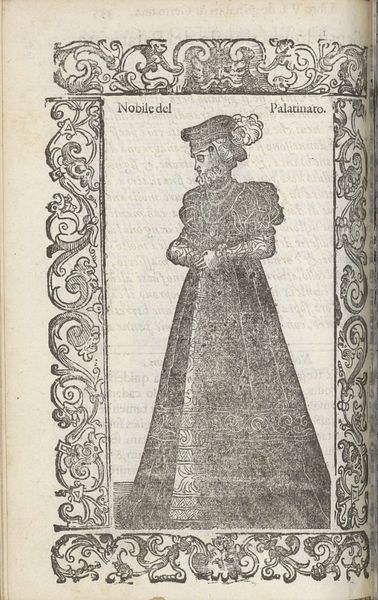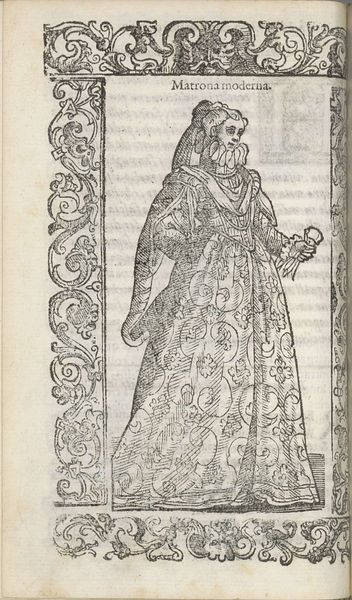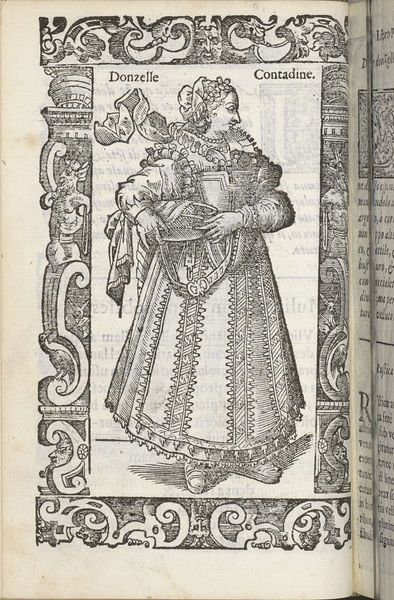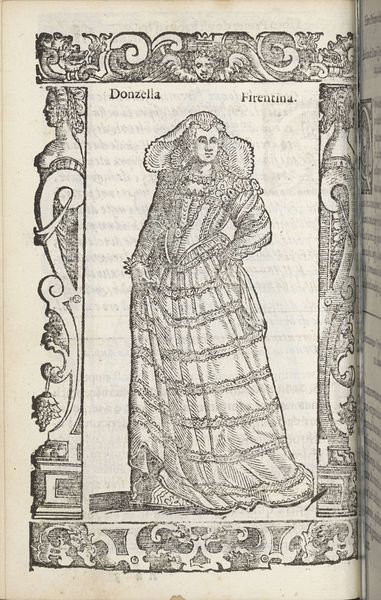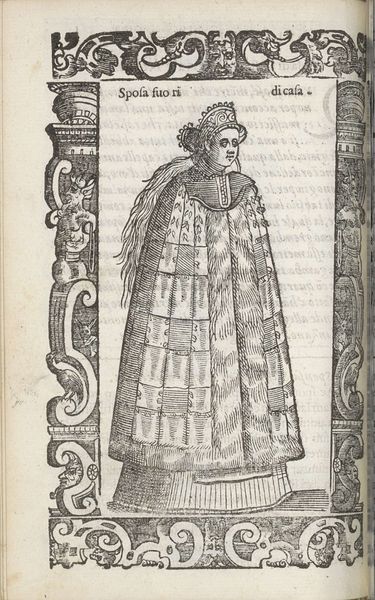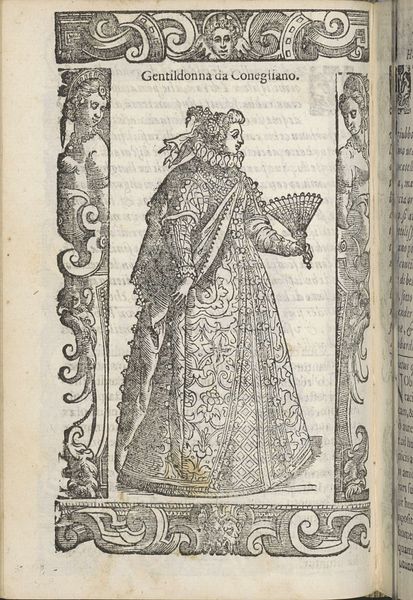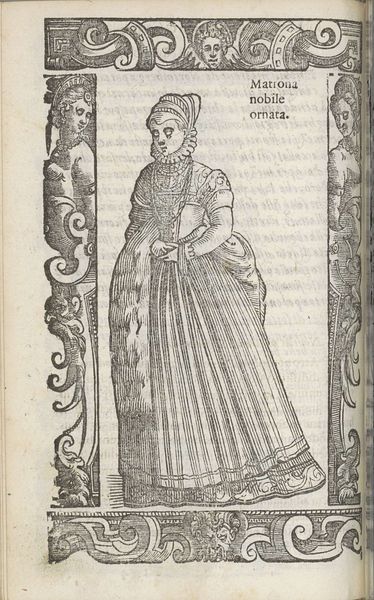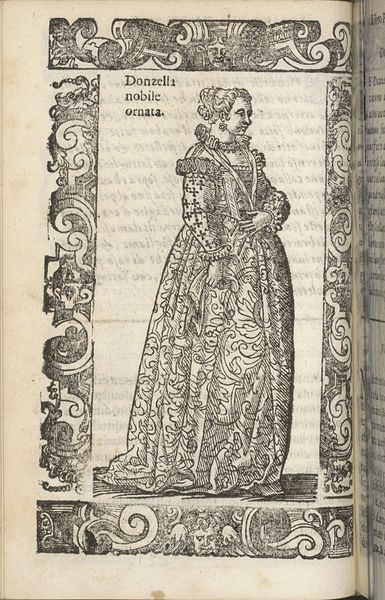
print, engraving
#
portrait
# print
#
figuration
#
italian-renaissance
#
engraving
Dimensions: height 167 mm, width 125 mm
Copyright: Rijks Museum: Open Domain
Curator: This engraving from 1598 by Christoph Krieger is titled "Sposa Dantiscana", and depicts a bride from Gdansk. It’s interesting to consider these prints as a record of societal fashion. Editor: The detail is quite astonishing. Despite being monochromatic, you can discern the textures and richness of her garments. Her posture projects a reserved solemnity, which makes you wonder what the cultural expectations surrounding marriage were for this young woman. Curator: Exactly. During the Renaissance, there was a burgeoning market for such printed images which served not only as artistic expressions but also as records of cultural identity, defining class and even geographical status through details of clothing and accoutrements. Krieger, as a German artist working in this period, would have been keenly aware of representing such markers accurately. Editor: And she isn't merely depicted, she is meticulously cataloged. Note how her hands are clasped gently holding a rosary; it all communicates pious decorum. Consider too, how visual representations of women have been historically controlled and what they reveal about patriarchal structures and societal expectations. Curator: Precisely, these prints provided a codified understanding and the distribution of them played a role in reinforcing or shaping social norms pertaining to gender roles. They help us comprehend the political implications in how an artist captured an image of a bride centuries ago. Editor: Which brings to the forefront: Who has access to dictate representation and what underlying messages about power and status are reinforced by choosing these particular styles? What message about beauty standards and idealized feminine character is sent forth here? Curator: Right, it compels one to acknowledge the complex negotiations and exchanges involved during that period to establish visual representation, while challenging contemporary perspectives concerning these gender norms. Editor: A fascinating entry-point when considering visual cultures overall. The conversation, both past and present, about image construction is far from finished.
Comments
No comments
Be the first to comment and join the conversation on the ultimate creative platform.
